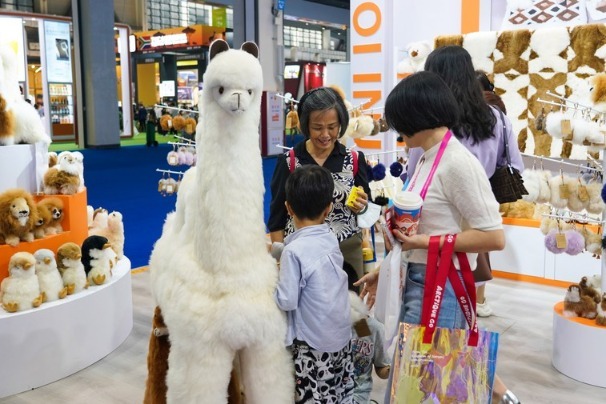China opens up wider in 2021


China remained steadfast in opening-up wider and further facilitating foreign entry to the country amid uncertainties in the past year. Measures to this end included hosting a series of expositions, trimming negative lists and facilitating trade and investment.
Bucking a sharp drop in global cross-border investment, China attracted $149.34 billion of foreign investment in 2020, maintaining its status as the world's second-biggest recipient of foreign investment.
Here is the general picture of what China has done to further open up its economy and promote high-quality economic development in 2021.
Shortening negative lists for foreign investment

China unveiled two shortened negative lists for foreign investment in December, marking the fifth consecutive year the world's second-largest economy has revised its national negative list and pilot free trade zone negative list.
The number of items off-limits for foreign investors has been cut to 31 in the latest version of the national negative list, down from 33, and the number of items on the pilot FTZ negative list has been reduced to 27 from 30 in the 2020 version.
According to the new lists, foreign ownership caps on passenger car manufacturing companies have been removed. All manufacturing sectors are open to foreign investors in the pilot FTZs.
Foreign investors' access to the service sector in pilot FTZs has also been widened. Foreign investment is allowed in the social survey industry, but ownership by foreign investors should be no more than 33 percent and legal representatives should be of Chinese nationality.
For those industries not included in the negative lists, foreign-invested enterprises should be given equal treatment.
Lowering import tariffs

China has fulfilled its pledge of lowering import tariffs for goods to 9.8 percent from 15.3 percent when it joined the WTO 20 years ago. At present, its overall import tax stands at 7.4 percent, lower than the average level of developing members of the WTO and is approaching the level of developed members of the organization.
The country has also significantly reduced non-tariff barriers for international trade, removing non-tariff measures covering 424 tariff categories by January 2005.
In terms of trade in services, China pledged to open the market for 100 subsectors in nine business categories by 2007. It actually opened nearly 120 subsectors, around 20 percent more than promised.
China implemented provisional tariffs that are lower than the most-favored-nation rates on 954 imported commodities on Jan 1 this year. The adjustment involves commodities including cancer drugs, aquatic products and baby clothing.
The 954 products also include ski gear, art, auto parts that help reduce greenhouse gas emissions, high-voltage cables for high-speed trains and fuel-cell components.
China-Europe freight trips boom

China-Europe freight train trips saw a steady increase in the first 11 months of 2021. The number of China-Europe freight train trips hit 13,817 in the January-November period, surging 23 percent year-on-year.
During this period, freight trains handled a total of 1.33 million 20-foot equivalent units of goods, up 30 percent from a year ago.
In November alone, the number of China-Europe freight train trips rose 1 percent year-on-year to 1,246, exceeding 1,000 for a 19th consecutive month.
In December the China-Laos Railway, a landmark project of high-quality Belt and Road cooperation, started operations.
The electrified passenger and freight railway runs 1,035 km, including 422 km in Laos, from the city of Kunming in Southwest China's Yunnan province, to the Lao capital Vientiane.
CIIEs handle over $270 billion in transactions

More than 1,200 buyers with annual import value of over $100 million came to the China International Import Expo last year, and 39 trading groups and 599 subgroups came to the event for professional procurement.
Nearly 3,000 businesses from 127 countries and regions participated in the CIIE. A total of 58 countries and three international organizations took part in the country exhibition, which also saw 15 countries joining the exhibition for the first time.
The total exhibition area of the CIIE last year was further expanded to 366,000 square meters, compared with 360,000 square meters the previous year.
Data showed the world's major auction companies, high-end consumer goods companies, food dealers, automakers, industrial electric enterprises, medical equipment enterprises and cosmetic enterprises debuted large numbers of products.
From $57.83-billion intended transaction in the first CIIE to $70.72 billion in the fourth, the cumulative amount the four CIIEs exceeded $270 billion.
Expo attracts 2,628 brands

The first China International Consumer Products Expo kicked off in May in Haikou, South China's Hainan province.
A total of 70 countries and regions attended the four-day expo, and 2,628 brands of 1,505 enterprises from home and abroad participated. The expo also attracted more than 240,000 visitors and covered 80,000 square meters.
Already 42 companies from sectors including fashion, life services, travel services, service consumption, food, health products, and jewelry have signed up for the second CICPE. Over 80 percent of exhibitors have expressed their willingness to participate in the second CICPE.
Guideline facilitates trade, investment in FTZs

The State Council has issued a guideline on promoting reform and innovation measures to facilitate trade and investment in the country's free trade zones.
China opened up wider to investments made by Hong Kong and Macao investors, innovated the development of import trade, unleashed the potential of new trade models, facilitated the import of medicine products and boosted the construction of opening-up channels.
The country sped up the development of multimodal transportation, further enriched the varieties of commodity futures, introduced overseas investors to trade in futures, improved regulatory policies on bonded futures settlements and innovated the management of bank accounts, the document said.
Wang Shouwen, vice-minister of commerce, said at a news briefing the new measures are expected to enhance trade facilitation at the pilot FTZs.
The potential of new trade norms will be unleashed, and support will be extended to help the pilot FTZs develop offshore trade, Wang said.




